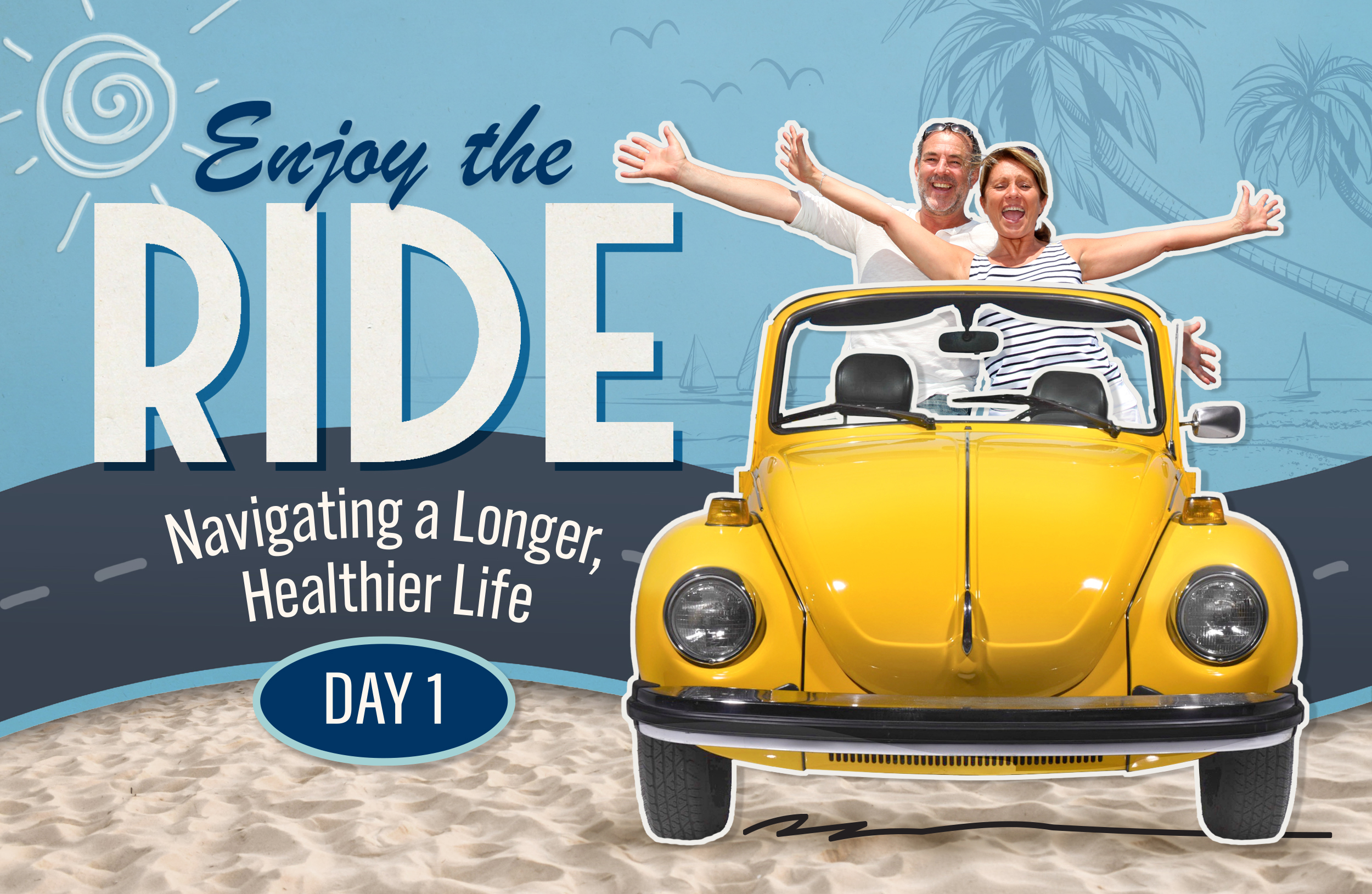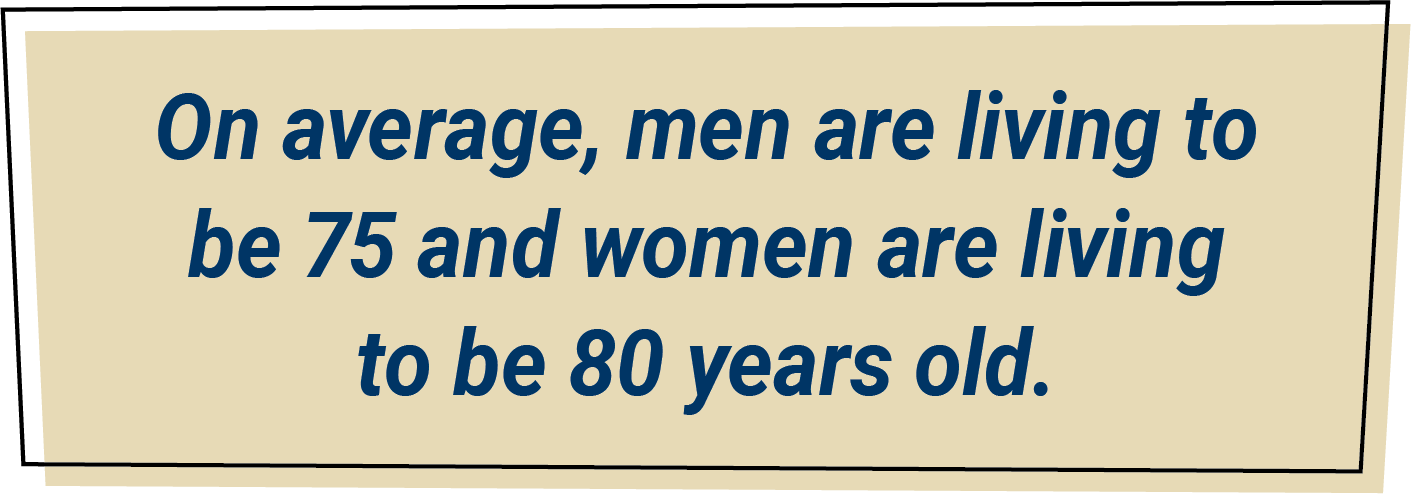
Day 1: What’s Longevity and How Do We Get There?
When we think of the road ahead, we might consider where we’ll travel, how much money we’ll have in our retirement accounts or about spending more time with our grandchildren.
We might even dream of living to see 100 candles on our birthday cakes—and none of these goals are out of the question when it comes to mapping the future.
That’s because the American lifespan, or how long we’re expected to live, is higher than ever. The CDC reports that, on average, men live to be around 75 years old while women live to be 80. Those numbers are even projected to increase to 84 and 87 by 2060.
However, having a lot of miles on our lifespan “odometer” doesn’t guarantee healthy years ahead.

For example, Baby Boomers are more likely to have cancer, lung disease, heart disease, diabetes, high cholesterol, obesity, hearing problems and mobility difficulties than previous generations. Another study indicates, regardless of our generation, one-third of us have an “extremely aged organ,” which can raise disease and mortality risks. This is a problem with our healthspan—or the part of our lives where we’re generally healthy.
And when we discuss the details of lifespan and healthspan together, we often refer to it as longevity.

Think of it this way—you might want to live to be 90, but what does the rest of your life look like? Can you still finish a crossword puzzle, carry your own groceries, fly to places on your bucket list, drive to your doctor’s appointments or chase your grandchildren around?
Of course, we want to live to be older and we want to stay healthy and independent for as long as possible, but many of us wait until retirement to focus on longevity.
No matter your age, it’s never too soon (or too late) to improve your health. In fact, developing healthy habits before the onset of disease can make the journey into your golden years a lot smoother.
That’s why we’re launching Enjoy the Ride: Navigating a Longer, Healthier Life. This 12-day road trip-themed email series will provide important information about brain, vision, hearing, heart, kidney, liver, gut, musculoskeletal and sleep health.
In these articles, we’ll “map the body” and explain which conditions are most prevalent as we age. We’ll also provide ways to avoid disease “potholes” and describe how making healthy choices now can impact longevity.
On day 12, you will receive a free download highlighting how you can navigate your health for years to come. We’ll also give away daily prizes to help you map the journey ahead.

Every day during the series, we'll share a few tips for a healthier journey. Whether you've drifted off track, need a tune-up or want to stay on course, we can help.

Getting Back on the Road
If you haven’t considered longevity before, that’s okay. It’s never too late to navigate around the bumps in the road ahead. So, write down what you want the journey to look like, and then you can work toward that plan one mile at a time. For example, you could start by committing to walking just 10 minutes per day as part of your health U-turn.

Tune-Up
You may have good control over the wheel, but have encountered a few roadblocks or detours, too. That happens to us all! The good news is you can still consider what part of the trip needs recalibrating. Maybe you exercise daily but eat too much fast food during your pit stops. The road can get a lot smoother, starting today, by identifying a few easy changes you can implement now.

Cruise Control
Maybe you’ve been navigating the journey really well. We’re glad if you’ve found a healthy lifestyle that works for you. However, it’s important to make sure you don’t get bored driving down the same road day after day. So, are there ways you can change gears to keep things interesting? Maybe by taking your exercise from the treadmill to the pool?


